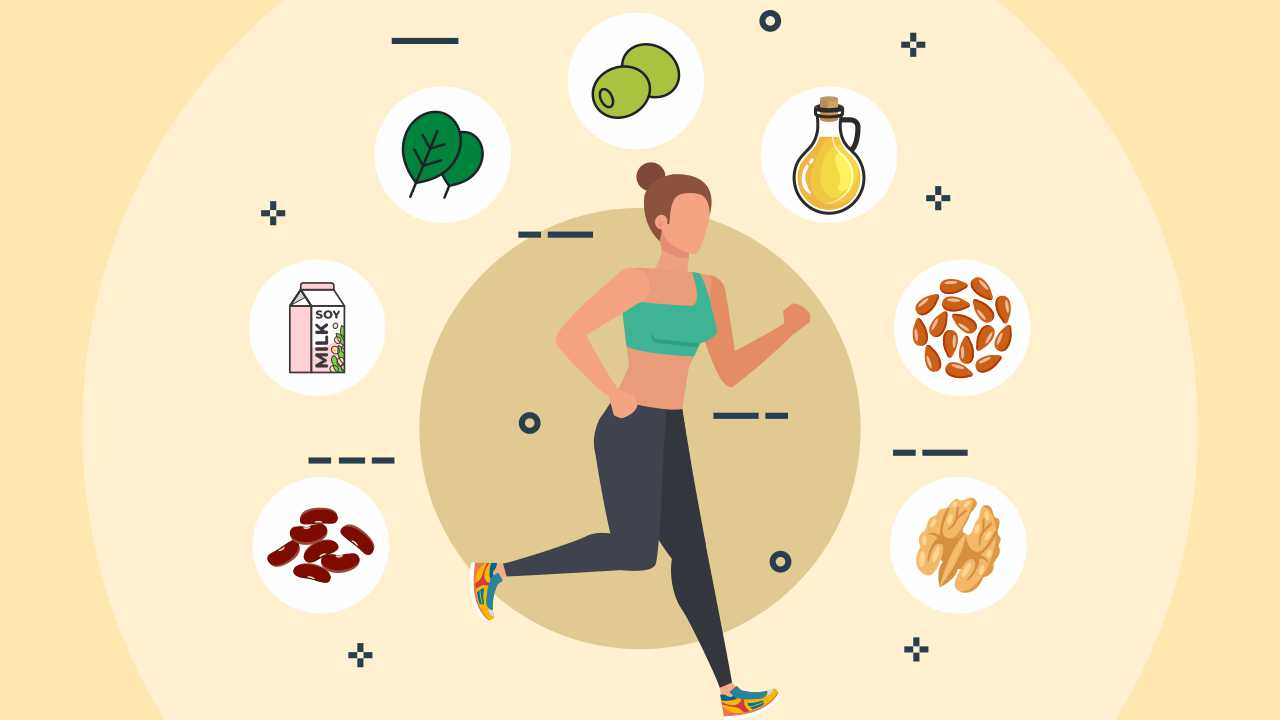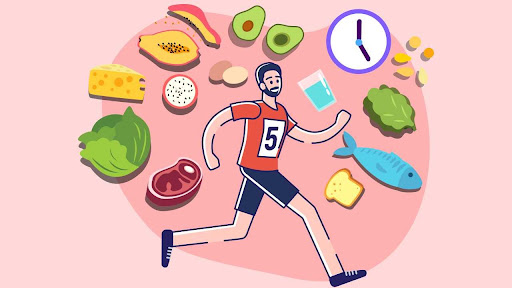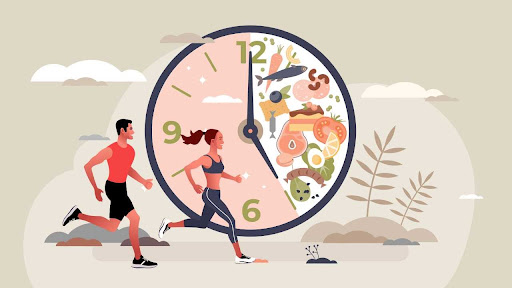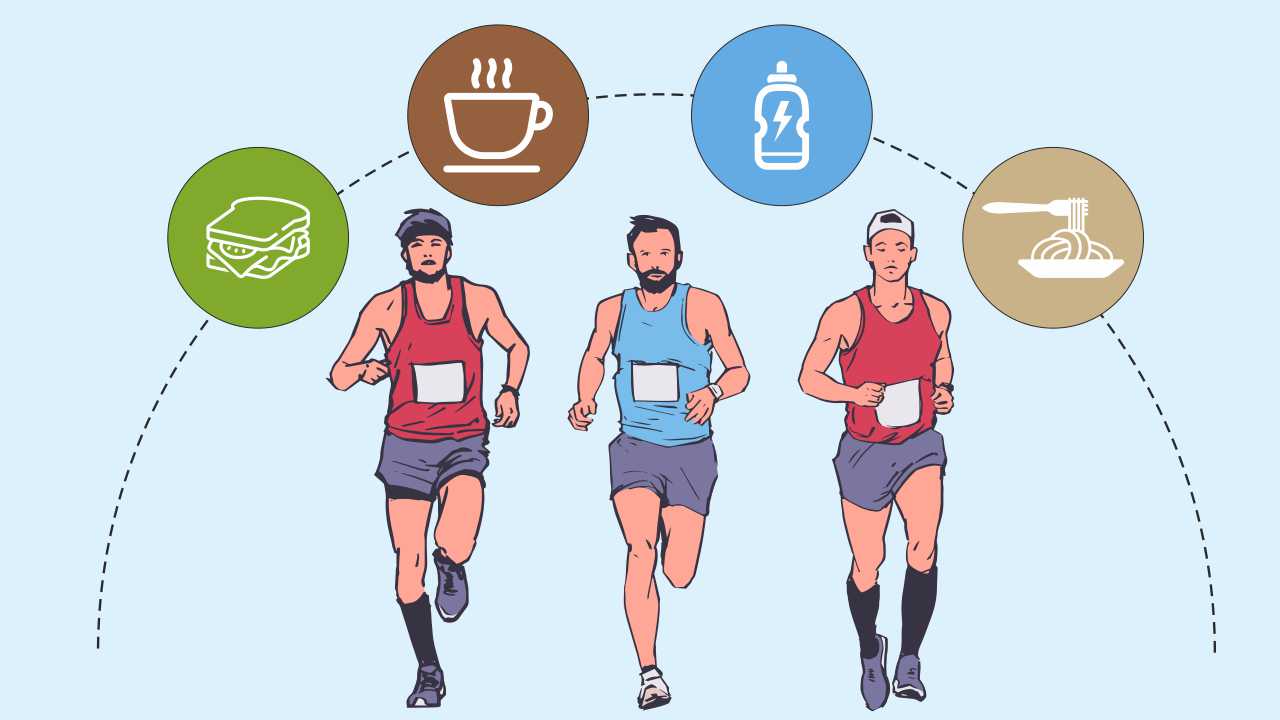
Can a Plant-based Diet Improve Running Performance?

Plant-based diets have gained popularity in recent times for their health benefits and high environmental sustainability. They may range from a strictly vegan diet to lacto-vegetarian or lacto-ovo-vegetarian diets that are largely plant-based, with a small proportion of food coming from animal sources. Plant-based diets are known to reduce the risk of cardiovascular diseases due to a lower saturated fat content and higher amounts of fiber and antioxidants like vitamin C.
A study published by the American Heart Association (AHA) suggests that plant-based diets may also protect you against type 2 diabetes mellitus, and cardiovascular disorders.
The nutritional needs of runners are higher than the general population, especially due to more physical activity, greater impact on the joints, and additional muscle wear-and-tear. As a runner, you need a higher intake of energy, protein, fat, carbohydrates, and micronutrients like calcium and iron to keep the running speed and endurance high.
Plant-based diets are infamous for being low in protein and essential micro-nutrients like iron and vitamin B12. As the intake of animal sources of protein is negligible in a plant-based diet, the quality of protein also tends to be lower. However, it is possible to meet the nutrient requirements of a runner through a plant-based diet, provided the diet is planned well and includes a variety of healthy foods. Moreover, plant-based diets are rich in nutrients such as vitamins A and C, and flavonoids that act as potent antioxidants, help reduce oxidative stress, and recover better post a run.
How to optimize your running performance while following a plant-based diet
Here are a few useful ideas to help you enhance your performance while you are on a plant-based diet:
1. Combine protein-rich foods to meet the requirements
The American College of Sports Medicine (ACSM) suggests marathon runners consume 1.2g-1.6g of protein per kilogram (kg) of body weight. This is higher than the Recommended Dietary Allowance (RDA) for the general population, which ranges between 0.8g-1g protein per kg body weight. However, the extra protein helps to perform and recover better.
Plant-based sources of protein like legumes and nuts lack one or more essential amino acids, which makes them incomplete sources. However, if complemented well, a vegan or vegetarian runner can also consume adequate protein.
Specific food groups have a deficit of particular amino acids. For example, cereals lack Lysine, which is an amino acid. So, combining foods helps make up for the missing amino acid. Here are the missing amino acids in specific food groups and the complementing food groups. Combine the food groups mentioned in column A with the ones listed in column C to ensure the provision of essential amino acids on a plant-based diet.
| Food Group (A) | Missing Amino Acid (B) | Complementing Food Group (C) |
| Legumes, pulses, and beans | Methionine | Cereals, nuts, and seed |
| Cereals | Lysine and Threonine | Legumes, pulses, and beans |
| Nuts and seeds | Lysine | Legumes, pulses, and beans |
| Vegetables | Methionine | Cereals, nuts, and seeds |
| Corn | Tryptophan and Lysine | Legumes, pulses, and beans |
So, a simple meal of rice and lentils (dal) or a corn and bean salad can provide you with complete protein while being environmentally conscious.
2. Soak, sprout, and cook
Improving the bioavailability of nutrients can help fulfill the required quantity and quality of nutrients to achieve your desired running performance. This can be done by processing foods in a certain way before cooking.
For instance, soaking reduces anti-nutritional compounds that are substances that hinder nutrient absorption, improve digestibility, and reduce cooking time. Soaked nuts may have been a part of your childhood. So, including them in your diet will be a wise idea.
Additionally, you may soak and sprout legumes, lentils, beans, and millets for a few hours or overnight before cooking to gain maximum nutrient benefits. Sprouting improves digestibility and increases the vitamin C content of the legumes. This is when planning your meals becomes important. Include soaking or sprouting in your daily to-do list. Set reminders on your phone, or decide to do it every day post your evening run or just before going to bed.
3. Pay attention to micronutrients
Include good sources of iron in your diet to ensure adequate oxygen supply throughout the body during the performance. The iron requirements of runners are 2.5 times higher than the Recommended Daily Allowance (RDA) of 19mg-29mg per day. It may range from 50mg to 85mg per day depending on your gender, hours of physical activity, and conditioning. Lentils, beans, dill leaves, garden cress (halim) seeds, spinach, and olives are some beneficial plant-based sources of iron. It is important to be mindful of the lower bioavailability of iron from plant sources due to compounds like phytates and oxalates and the presence of the poorly absorbed form of iron called the non-heme iron. Animal sources of iron like egg and liver majorly contain heme iron, which is well-absorbed in the body.
Soaking, cooking, and adding vitamin C-rich foods like lemon juice, coriander leaves, and orange juice can improve iron absorption in the gut. So, next time you make a lentil dish, remember to garnish it with some freshly chopped coriander leaves and a generous squeeze of lemon juice
Calcium is another important nutrient for bone health and efficient movement of the skeletal and heart muscles. At least 1,500mg per day of calcium intake is necessary to prevent osteoporosis. Without the intake of fish and dairy, you need to pay extra attention to include calcium-rich plant foods in your diet. Sesame seeds and dried figs are the richest vegetarian sources of calcium. Many plant-based milks like soy milk, oats milk, and hemp seed milk are fortified with calcium and play a pivotal role in fulfilling the body’s need for this mineral.
Also read: Micronutrients: Vitamins, Minerals and the Role They Play
However, a large amount of calcium and iron compete in the gut for absorption. So, if consumed together, especially as supplements, it is likely that none of them will be absorbed and be excreted through the feces. Therefore, it is ideal to consume calcium and iron supplements at different times. You may make it a habit to have your iron supplement after breakfast and calcium supplement at bedtime to make the most out of their benefits.
Apart from these nutrients, omega-3 fatty acids and vitamin B12 also lack in a plant-based diet. Flax seeds and walnuts are good sources of omega-3 fatty acids, but contain a type of omega-3 fatty acid that needs to be converted in the body to be usable. This modification is not carried out effectively in the human body. So, the conversion rate in the body is minimal compared to animal-based sources. Therefore, you may need to rely on supplements to meet the increased requirements of omega-3 fatty acids. Vitamin B12 is present in dairy and is produced by the gut microbiota. However, if you are following a strictly vegan diet, you may have to depend on supplements for vitamin B12 along with vitamin D.
4. Balance the carbohydrates
It is advisable for runners to consume 5g to 12g of carbohydrates per kg body weight per day. So, ensure to consume at least six-seven servings of grains, two-three servings of pulses or legumes, two-three servings of vegetables, and two-three servings of fruit daily to meet the carbohydrate requirements. You may use a clenched fist to measure one serving of grains and pulses, one cup to measure a serving of vegetables, and a cup of chopped fruit or a whole fruit that fits in a cupped palm as one serving of fruit.
Plant-based diets tend to be higher in carbohydrates due to the predominance of grains, fruits, and vegetables. Though carbohydrates are an essential nutrient for runners, it is necessary to pay attention to their quality in the diet. Choose minimally processed whole grains like oats, millets, whole wheat, and brown rice instead of processed foods like white bread and white rice. The fiber in whole foods helps provide sustained energy and improves running performance. Besides being a good source of energy and fiber, vegetables and fruits contain micronutrients like vitamins A, C, K, potassium, and zinc.
5. Befriend nutritious fats
Fat is another important nutrient that varies in quality between plant-based diets and omnivorous diets. Adequate amount of lipid intake is necessary to improve endurance, facilitate bone-muscle coordination, and preserve joint health. Plant-based diets are lower in saturated fat and higher in monounsaturated fatty acids (MUFA) and polyunsaturated fatty acids (PUFA).
Also read: Fats: Why Are They an Essential Part of Your Diet
Most nutrition guidelines for runners suggest that at least 25%-30% of daily energy intake should come from lipids. Olive oil, rice bran oil, groundnut oil, and sesame oil are some cooking oils that have a better fatty acid profile, especially in terms of the ratio of omega-3 to omega-6 than others. Regular intake of one-two servings of nuts and oilseeds like almonds, walnuts, sunflower seeds, and pumpkin seeds is recommended for most runners. Including a tablespoon or two of nut butter like peanut butter and almond butter, which are made without refined sugar, in your daily diet is also an effective way to consume those healthy fats.
Plant-based diets are healthy for the body and the earth. A balanced and diverse plant-based diet can help you meet your nutrient requirements and accomplish your running goals. Moreover, it can safeguard you from chronic diseases and contribute toward creating a greener planet.
References
1. Kunstel K. Calcium requirements for the athlete. Curr Sports Med Rep 2005; 4: 203–6.
2. Nebl J, Schuchardt JP, Ströhle A, et al. Micronutrient status of recreational runners with vegetarian or non-vegetarian dietary patterns. Nutrients 2019; 11: 1146.
3. Venderley AM, Campbell WW. Vegetarian diets: Nutritional considerations for athletes. Sport Med 2006; 36: 293–305.
4. Protein Complementation. https://nutrition.org/protein-complementation/ (accessed June 28, 2021).
5. McMacken M, Shah S. A plant-based diet for the prevention and treatment of type 2 diabetes. J Geriatr Cardiol 2017; 14: 342–54.
6. Kim H, Caulfield LE, Garcia-Larsen V, et al. Plant-Based Diets Are Associated With a Lower Risk of Incident Cardiovascular Disease, Cardiovascular Disease Mortality, and All-Cause Mortality in a General Population of Middle-Aged Adults. J Am Heart Assoc 2019; 8: e012865.














